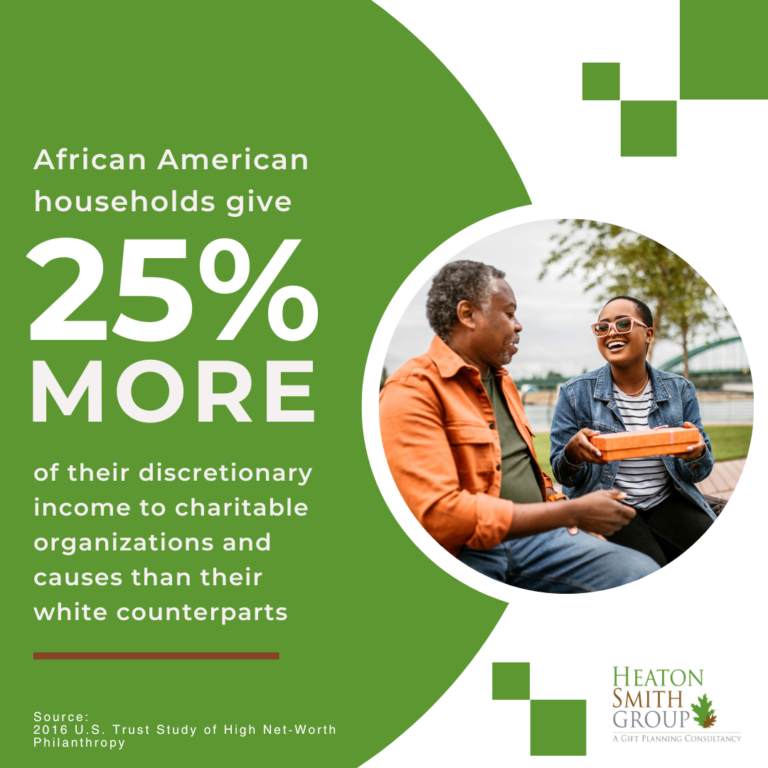Combat the Effects of High Inflation on Donors’ 2023 Giving
Please enter your information to receive this free article.
The African American community has a strong tradition of giving its time, talent, and treasure to others. Historically, these gifts have gone to churches, a donor’s alma mater, and civic organizations such as the Urban League and NAACP.
According to the 2016 U.S. Trust Study of High Net-Worth Philanthropy¹, African American households give 25% more of their discretionary income to charitable organizations and causes than their white counterparts.
Despite this culture of giving, when I first mention planned giving to many individuals, they initially balk at the idea due to a belief that it is only for extremely wealthy donors. However, a planned gift can simply be any major gift made during an individual’s lifetime and/or at their death as part of their overall financial or estate plan. These gifts include bequests, qualified charitable distributions (QCDs), beneficiary designation of retirement assets or life insurance policies, donor-advised funds, and more.

Supporting Important Causes
Planned giving allows individuals to support their favorite charitable causes in perpetuity through endowments. For donors that endow scholarships at higher education institutions, some direct their gifts toward first-generation African Americans attending college while others may direct their scholarships to need-based students. Donors determine the long-term impact they want to have on the African American community, and with input from gift officers, design their gift accordingly.
Planned gifts also allow individuals to make larger gifts than they might normally think possible by utilizing a wide range of financial assets, such as a beneficiary designation in a life insurance policy or retirement account, real estate, or tangible personal property. According to Hugh B. Price, former president of the National Urban League, “Black philanthropy provides the indispensable financial foundation that guarantees the survival of vitally important nonprofit institutions while also fueling their ascent to new heights of impact and excellence.”
Most African Americans give to institutions, causes, and grassroots organizations that directly support the African American community. Supporting these causes through planned gifts help sustain organizations working to improve a variety of outcomes for African Americans. In addition, certain planned gift instruments allow families to retain the majority of their assets and accumulate intergenerational wealth. Particular charitable trusts can preserve assets for family long-term but provide current income to a nonprofit in the interim, and life income gifts can create an income stream for beneficiaries and thus help to reduce the racial wealth gap in the US.
The tradition of charitable giving, even among individuals with modest means, is alive and well in the African American community. By pooling resources through giving circles, churches, social clubs, and professional associations, African Americans have created unique systems of giving that have redefined philanthropy in America.
For more information about how to establish a planned giving program for your institution, please contact Tamisha Keith at tamisha@heatonsmithgroup.com.
Your message was successfully sent
Our customer support manager or technical department representative will contact you within 24 hours.
Please enter your information to receive this free article.